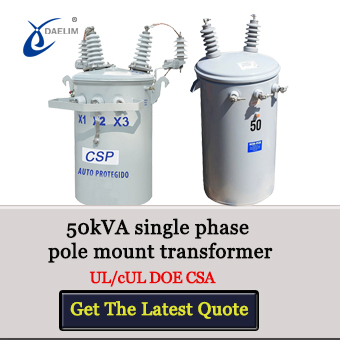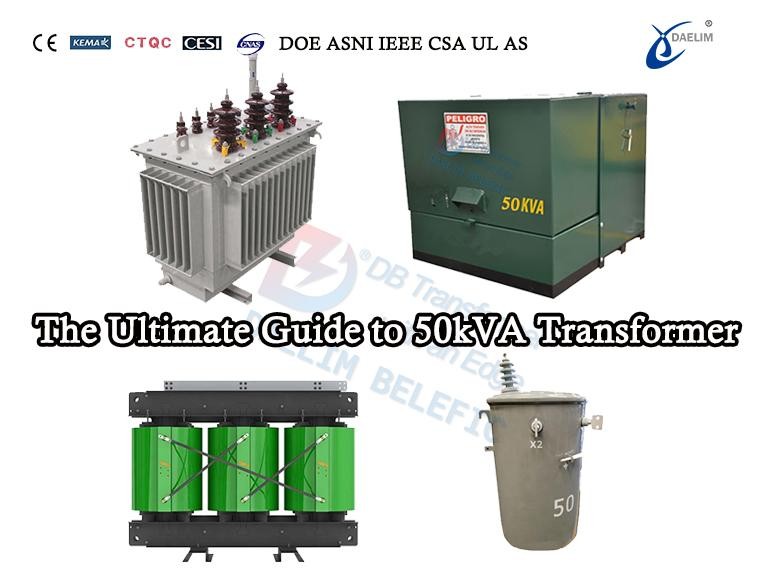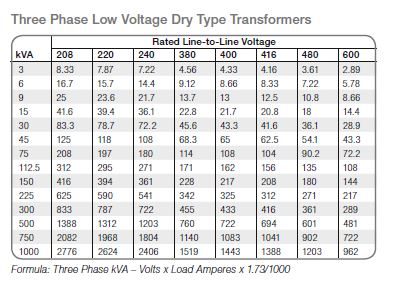A 50KVA transformer typically provides 208 amps at 240 volts and 139 amps at 360 volts. Ampere values vary with voltage.
Transformers are essential for regulating voltage levels in electrical systems. A 50KVA transformer is widely used in industrial and commercial applications. It ensures electrical equipment operates safely and efficiently. Transformers convert high-voltage electricity to lower, usable levels. This process helps in reducing energy loss and enhancing system performance.
Understanding the ampere output at different voltages is crucial for selecting the right transformer. This ensures compatibility with your specific electrical requirements. Proper transformer selection and usage contribute to system reliability and longevity. Always consult technical specifications for precise data.

Credit: www.t-r.com
Introduction To 50kva Transformers
A 50Kva transformer is crucial in electrical systems. These devices help in voltage conversion. They ensure the smooth operation of electrical devices. Understanding their functions can help in various applications.
Basics Of Kva And Amps
Kva stands for kilovolt-amperes. It measures the apparent power in an electrical circuit. One Kva equals 1,000 volt-amperes. Amps measure electrical current. They show the flow of electricity through a conductor. These terms are related yet different.
Knowing the relationship between Kva and Amps is important. It helps in selecting the right transformer. Below is a simple formula to convert Kva to Amps:
Amps = (Kva × 1000) / Voltage
For example, a 50Kva transformer with a 240V output will have:
Amps = (50 × 1000) / 240 = 208.33 Amps
Importance In Electrical Systems
50Kva transformers are vital in various settings. They are used in commercial buildings, schools, and industries. These transformers ensure devices get the right voltage. They also protect equipment from power surges.
Transformers also improve energy efficiency. They reduce energy loss during voltage conversion. This makes them essential for sustainable energy practices.
Here’s a quick summary of why 50Kva transformers are important:
- Voltage conversion for different devices
- Protection from power surges
- Improved energy efficiency
- Crucial for commercial and industrial applications
Calculating Amps For 50kva Transformers
Understanding how to calculate amps for a 50Kva transformer is crucial. It helps in ensuring efficient power usage and safety. This guide explains the process in simple steps.
Formula And Key Variables
To calculate amps, you need to know the formula and key variables. The basic formula is:
Amps = (Kva × 1000) / VoltageThe key variables are:
- Kva: Kilovolt-amperes, the rating of the transformer.
- Voltage: The voltage level the transformer operates at.
Sample Calculation
Let’s see a sample calculation for a 50Kva transformer. Assume the voltage is 400V.
| Variable | Value |
|---|---|
| Kva | 50 |
| Voltage | 400V |
Using the formula, we get:
Amps = (50 × 1000) / 400So, the transformer will draw:
Amps = 125AThis means a 50Kva transformer at 400V draws 125 amps.
Understanding these calculations ensures the transformer operates safely and efficiently.
Factors Affecting Transformer Efficiency
Efficiency is crucial for any 50Kva transformer. Several factors impact its performance. Understanding these can help optimize transformer usage and extend its life.
Load Conditions
Load conditions play a significant role in transformer efficiency. A transformer performs best at a specific load. Deviating from this load can result in losses.
- Full Load: The transformer operates at its rated capacity. Efficiency is usually optimal.
- Partial Load: Operating below capacity can lead to increased losses. The transformer is not fully utilized.
- Overload: Exceeding the rated capacity causes overheating. This reduces efficiency and may damage the transformer.
Temperature Impact
Temperature significantly affects the performance of a 50Kva transformer. High temperatures can degrade insulation and increase losses.
Temperature rise inside the transformer can be due to:
- Ambient Temperature: Higher ambient temperatures can elevate internal temperatures.
- Load Conditions: Overloading generates more heat, affecting efficiency.
- Cooling System: Inefficient cooling systems fail to dissipate heat effectively. This leads to higher internal temperatures.
Maintaining optimal temperature levels is crucial for ensuring transformer efficiency.
| Factor | Impact on Efficiency |
|---|---|
| Load Conditions | Optimal at full load, reduced at partial/overload |
| Temperature | Higher temperatures reduce efficiency |

Credit: www.daelimtransformer.com
Improving Transformer Efficiency
Enhancing the efficiency of a 50Kva Transformer is crucial for optimal performance. Efficient transformers save energy and reduce costs. Here are some ways to improve transformer efficiency:
Regular Maintenance
Regular maintenance keeps your transformer in top condition. Inspect the transformer for any signs of wear and tear. Clean the transformer components regularly to prevent dust build-up. Check and tighten connections to avoid energy loss.
| Maintenance Task | Frequency |
|---|---|
| Visual Inspection | Monthly |
| Cleaning | Quarterly |
| Tightening Connections | Annually |
Upgrading Components
Upgrading components can significantly improve transformer efficiency. Replace old parts with new, efficient ones. Upgrade the cooling system to prevent overheating. Use advanced insulation materials for better performance.
- Replace old parts with efficient ones
- Upgrade the cooling system
- Use advanced insulation materials
These upgrades ensure your transformer operates efficiently. They also extend the lifespan of the transformer.
Energy-saving Tips
Understanding how to save energy with your 50Kva Transformer Amps can lead to significant cost savings. Implementing a few smart practices can make a huge difference. Below are some practical tips to help you optimize energy usage.
Optimal Load Management
Maintaining an optimal load on your transformer is crucial for energy efficiency. Too much or too little load can lead to wasted energy. Here’s how to manage it effectively:
- Ensure the load is within the recommended range of 40% to 70%.
- Use load balancing to distribute the electrical load evenly.
- Regularly monitor the load to detect any imbalances.
With these steps, you can avoid overloading or under-utilizing your transformer.
Avoiding Overloads
Overloading your transformer can cause it to overheat and waste energy. It’s also a safety hazard. Follow these tips to prevent overloads:
- Never exceed the maximum rated capacity of 50Kva.
- Install protective devices like circuit breakers.
- Regularly inspect and maintain your transformer.
By taking these precautions, you ensure your transformer operates safely and efficiently.
Implementing these energy-saving tips can lead to better performance and lower energy costs for your 50Kva Transformer Amps.
Selecting The Right Transformer
Choosing the right transformer for your needs is crucial. A 50Kva transformer is a significant investment. It can impact the efficiency of your electrical systems. Below are essential aspects to consider.
Matching Load Requirements
First, understand your load requirements. How much power will the transformer handle? Calculate the total amperage needed. You can use the following formula:
Amps = Kva × 1000 / Volts
For a 50Kva transformer, the calculations will vary based on the voltage. Here is a simple table for better understanding:
| Voltage (V) | Amps |
|---|---|
| 240V | 208.33A |
| 480V | 104.17A |
Ensure the transformer can handle your specific load. This will prevent overheating and ensure efficiency.
Considering Environmental Factors
The environment where the transformer is installed is crucial. Is it indoors or outdoors? Environmental factors can affect transformer performance. Consider these conditions:
- Temperature: Extreme temperatures can affect efficiency.
- Humidity: High humidity can cause corrosion.
- Ventilation: Proper airflow is essential for cooling.
Ensure the transformer is suited for the installation environment. This will extend its lifespan and maintain performance.
Common Mistakes To Avoid
Handling a 50Kva Transformer requires careful consideration and attention to detail. Mistakes can lead to inefficiencies, damage, and safety hazards. Avoiding common pitfalls ensures the transformer operates optimally and lasts longer.
Ignoring Load Variability
Load variability is a critical aspect often overlooked. A 50Kva Transformer must handle varying loads without issues. Ignoring this can lead to overheating and reduced lifespan.
Transformers should be rated for the highest possible load. This prevents overload and potential failures. Ensure to monitor the load regularly and make adjustments as needed.
Neglecting Maintenance
Regular maintenance is key to transformer health. Neglect can lead to unplanned outages and costly repairs. Essential maintenance tasks include:
- Checking oil levels and quality
- Inspecting for leaks and signs of wear
- Testing electrical insulation
- Cleaning and tightening connections
A maintenance schedule helps keep track of these tasks. Ensuring timely maintenance avoids unexpected breakdowns and extends the life of the transformer.
Future Trends In Transformer Technology
The world of transformer technology is rapidly evolving. The 50Kva Transformer Amps are no exception. New advancements are shaping the way we use these transformers. Let’s explore some exciting trends.
Smart Transformers
Smart transformers are making a big impact. These devices can communicate in real-time. They help in maintaining efficient power distribution. Smart transformers can monitor their own health. They send alerts if something goes wrong. This technology reduces downtime and maintenance costs.
- Real-time data communication
- Health monitoring
- Reduced maintenance costs
Eco-friendly Solutions
Eco-friendly solutions are becoming a priority. The focus is on reducing the environmental impact. Using biodegradable oils in transformers is one way. These oils are less harmful to nature.
Another trend is the use of recyclable materials. These materials help in reducing waste. Transformers with lower energy losses are also popular. They save energy and reduce emissions.
| Eco-Friendly Feature | Benefit |
|---|---|
| Biodegradable Oils | Less environmental impact |
| Recyclable Materials | Reduced waste |
| Low Energy Loss | Energy saving and reduced emissions |

Credit: www.daelimtransformer.com
Frequently Asked Questions
How Many Amps Is A 50 Va Transformer?
A 50 VA transformer at 120 volts outputs approximately 0. 42 amps. Divide VA by voltage to find amps.
How Many Amps Does A 50kva Generator Produce?
A 50kVA generator produces approximately 208 amps at 240 volts for a single-phase system. For a three-phase system, it generates around 69. 3 amps at 415 volts.
What Is The Full Load Current Of A 50 Kva Transformer?
The full load current of a 50 kVA transformer depends on the voltage. For a 3-phase 400V system, it is approximately 72. 2A.
What Is The Load Capacity Of A 50kva Transformer?
A 50kVA transformer typically has a load capacity of 50,000 volt-amperes. It can support up to 200 amps at 250 volts.
Conclusion
Understanding the 50Kva transformer amps is essential for efficient energy management. This guide provides the key details you need. With the right knowledge, you can ensure optimal performance and longevity. Always consult with professionals for accurate advice tailored to your specific needs.
Stay informed and make smarter energy decisions.


